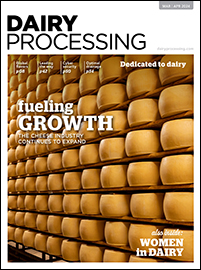NEW YORK — Food and beverage companies will have quite a lot to swallow in digesting the effects of GLP-1 weight-loss drugs on their industry, according to global business consultancy PwC.
Consumers using or planning to use GLP-1 medications can be expected to make definite changes in the amount of food they buy and eat, what they eat and how often they eat, PwC said in a new report, The Business of Losing Weight: How Weight-Loss Drugs are Disrupting Consumer Industries, released Jan. 3 and based on research from PwC’s 2024 GLP-1 Trends & Impact Survey, which polled 3,000 US adults.
The bottom line: Food and beverage suppliers and retailers — and restaurant and foodservice operators — are likely to see Americans’ volume of purchases and caloric consumption “meaningfully decrease” as the burgeoning market for GLP-1 drugs draws more users, PwC said.
Glucagon-like peptide-1 (GLP-1) drugs help people lose weight by making them feel fuller with less food and by signaling the brain that the stomach contains food, reducing their appetite and cravings. Their effectiveness in lowering body weight versus traditional weight-loss solutions has caught the attention of many consumers. Among the most prescribed GLP-1 medications are Mounjaro, Ozempic, Wegovy, Cagrisema and Rybelsus.
Weight-loss drug explosion
PwC described the GLP-1 market as “poised for explosive growth.” Its GLP-1 Trends & Impact Survey found that more than 8% of Americans already are taking GLP-1 medications, and nearly 35% are interested in these drugs for weight loss.
Centers for Disease Control and Prevention (CDC) data show that more than 100 million US adults are obese, PwC noted, while an analysis published in JAMA Cardiology in November determined that 137 million Americans may be eligible for the GLP-1 drug semaglutide (prescribed as Wegovy for weight loss and Ozempic for type 2 diabetes).
Citing various estimates, PwC pegged the current GLP-1 market at $133 billion, with the potential to climb to $150 billion by 2030.
“This expansion — coupled with the looming possibility of GLP-1s becoming the standard of care for obesity treatment and their potential applications beyond weight loss — is profoundly disrupting consumer-facing businesses,” PwC said in its report. “As federal policies plan to widen access and lower the cost of these anti-obesity drugs through Medicare and Medicaid, their user base could increase by 7 million. Consequently, businesses should rethink their operations and revenue streams to offer value that aligns with this new consumer ethos.”
Market research thus far has indicated that GLP-1 drugs may impact consumer spending on food and beverages — namely, on candy and sugary snacks and drinks — in shopping regularity, basket size and product choices as these medications affect eating habits in areas such as frequency, portion size and taste preferences.
Spending and eating less – and differently
Among US consumers surveyed by PwC, GLP-1 users spent an average of about 11% less on most categories of food, with the largest reductions in sweet and salty snacks and baked foods. Twenty-nine percent of GLP-1 users polled said they cut back their food and beverage spending.
In terms of eating and dietary changes, 47% of GLP-1 users in PwC’s survey reported eating smaller portions, and 56% said they now make healthier food choices.
PwC said it didn’t expect consumers using GLP-1s to stop eating all less-healthy foods, but noted the volume of purchases may change and overall caloric consumption per person could meaningfully decrease.
According to PwC’s report, key implications of rising GLP-1 drug adoption for food and beverage industry stakeholders — retailers, restaurants and suppliers — include decreased foot traffic as people eat less food less often; lower demand for processed snacks as GLP-1 users shift from high-calorie items to lower-calorie, nutrient-dense options; and smaller portion sizes as GLP-1 users’ dietary preferences transition to calorie-controlled meals and snacks.
Alcohol sales also may drop as GLP-1 users lower their alcoholic beverage intake, PwC added, noting that 33% of “habitually heavy drinkers” in its survey reported reducing their alcohol consumption. That includes drinking less as well as opting for lower-calorie alcoholic beverages such as “skinny” drinks containing less syrup and sugar versus traditional high-calorie cocktails or “sugar-laden mocktails,” the report said.
“The prospect of tens of millions of Americans slashing their daily intake to about 1,000 calories per day — typical for GLP-1 users — has obvious potential to unsettle consumer packaged goods (CPG) leaders,” PwC said. “While CPG new product launches have been in a lull recently, the emerging market demands visionary innovation.”
Addressing the ripple effects
Food retailers, suppliers and manufacturers and restaurant/foodservice operators can mitigate the “ripple effects of weight-loss drugs” via a number of strategies, according to PwC. The common thread is the ability to adapt and innovate based on GLP-1 users’ changing food and beverage spending and consumption habits.
For example, the report said restaurants could serve up more “low-calorie, nutrient-rich options” catering to GLP-1 users’ diets. That also could be reinforced by certifying these healthier menu choices through partnerships with health organizations.
“Restaurants and food providers that focus on providing for indulgent occasions could ask, ‘When food is a special event in itself, or the focus of a celebratory occasion, how can awareness of healthier eating enhance the experience?’” PwC explained. “Factors to reconsider include portion sizing and reframing take-home/takeout/meal-kit options as ‘healthy splurges.’”
Also worth considering is the integration of products with nutrition-focused advice, digital tools and planning services that change the focus “from merely selling products to delivering comprehensive nutrition outcomes,” the report said, noting that such strategies can drive repeat interactions and upselling.
Finally, an increased health-consciousness among consumers may call for CPG companies to reformulate products, especially as GLP-1 users are “moving away from traditional salty, spicy and sweet flavors,” according to PwC.
“Businesses focusing on healthier eating may benefit if they can maintain prices and appeal to changing customer demographics and preferences,” PwC said. “Clearly communicating the nutritional values and health benefits of meals choices will be increasingly important.”

